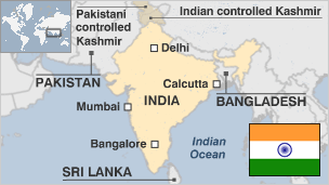
Facts and stats about India
- Agriculture 222
- Background 11
- Conflict 10
- Cost of living 55
- Crime 89
- Culture 32
- Disasters 21
- Economy 3372
- Education 604
- Energy 1207
- Environment 220
- Geography 91
- Government 227
- Health 329
- Import 8
1.22 billion
Population. Ranked 2nd in 2013.
$1,489.24
GDP per capita. Ranked 135th in 2012.

2.97 million sq km
Sq. km. Ranked 8th in 2008.